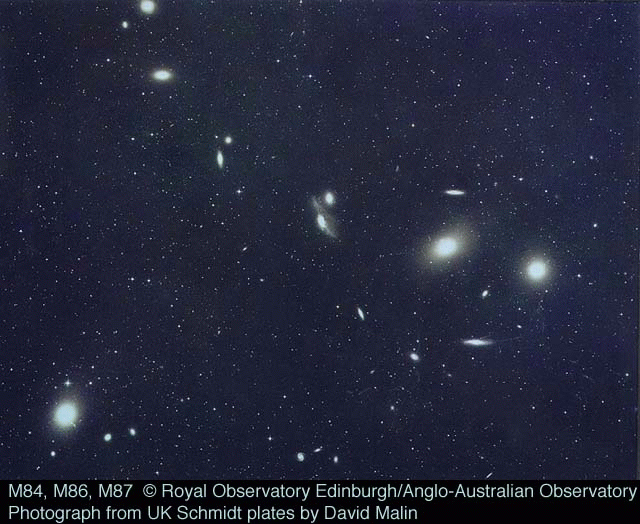
 Copyright © Michael Richmond.
This work is licensed under a Creative Commons License.
Copyright © Michael Richmond.
This work is licensed under a Creative Commons License.
Astronomers have classified galaxies into different groups, based largely on their appearance in photographs. There's quite a variety, as this section of the Virgo Cluster shows:
Look for glowing clouds of gas (HII regions), dust, and clusters of blue, hot, young stars.
Large Magellanic Cloud: irregular, perhaps a bar?
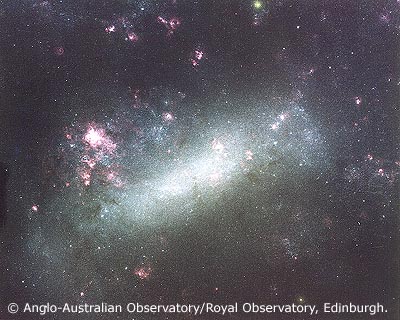
Small Magellanic Cloud: another irregular

Irregular Local Group galaxy NGC 6822
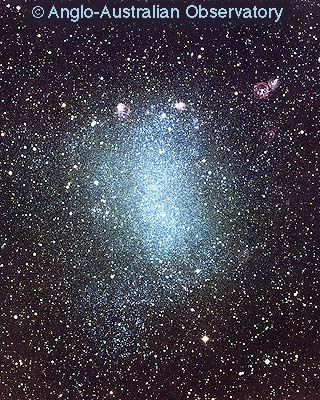
Some galaxies classified as irregular look really wierd. M82 gives the appearance of a giant explosion
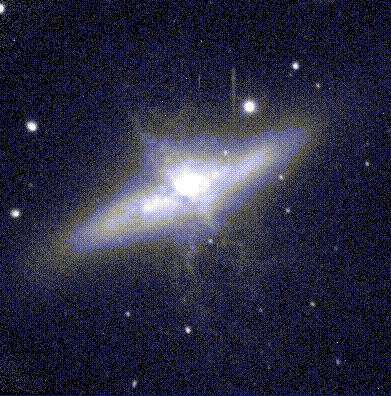
Where are the obvious clouds of gas and dust? How do the colors of stars in the arms compare to the colors of stars in the bulge?
The Andromeda galaxy M31 (and its companion galaxies M32 and M110)
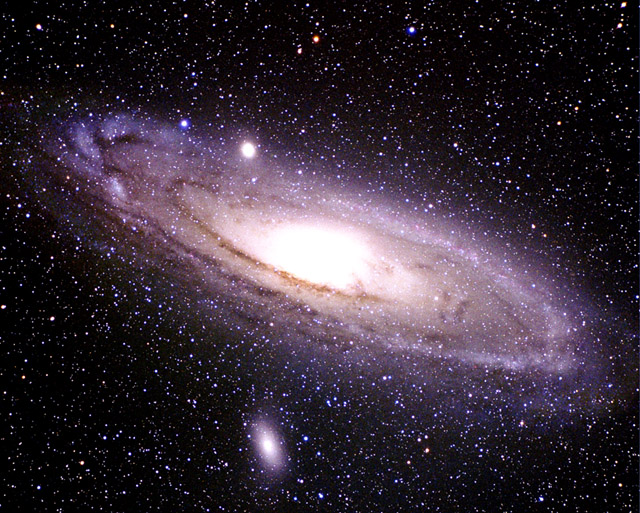
Closeup of M31 and one of its companion galaixes, an elliptical galaxy called M32
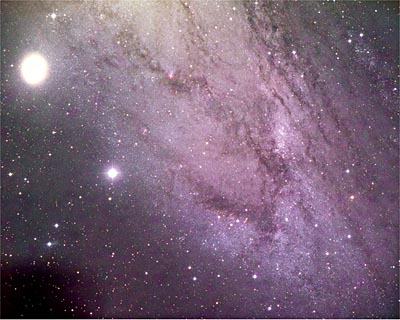
The spiral galaxy M100 -- first, a wide-field image
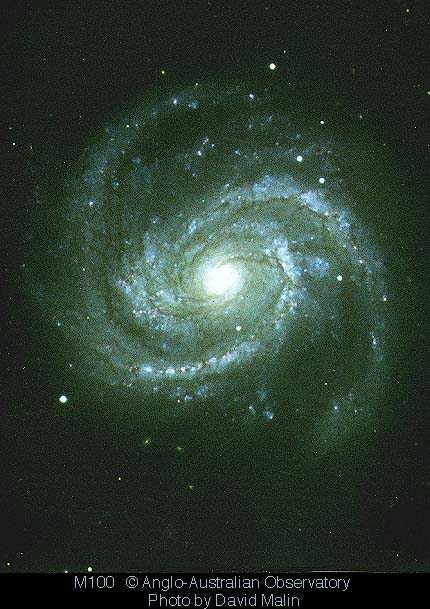
Now, a closeup of its central regions
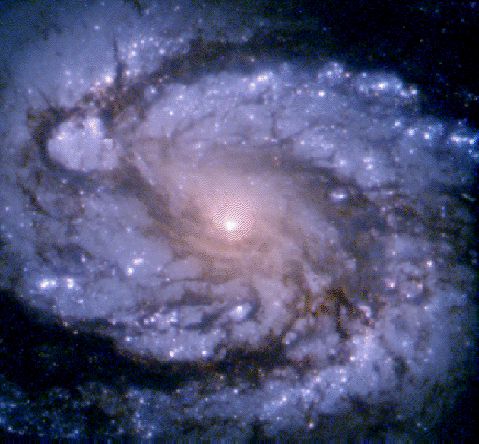
The "Blackeye Galaxy" M64 -- first, a monochome picture
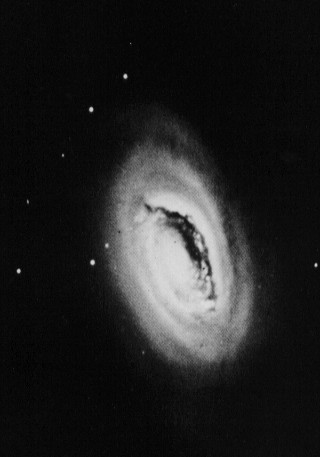
and now a color picture
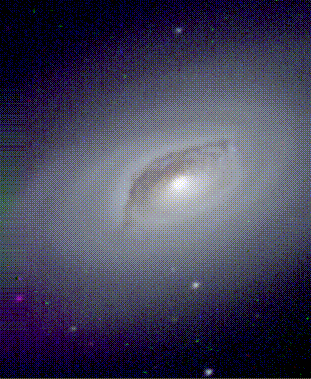
The "Sombrero Galaxy" M104
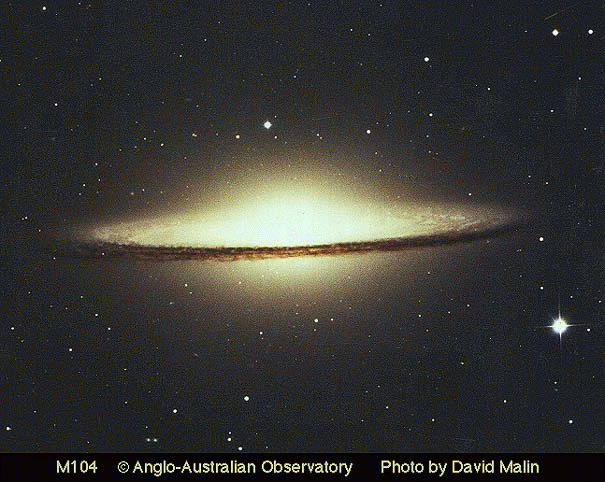
Near the Big Dipper is a pair of relatively nearby galaxies: M81 and M82
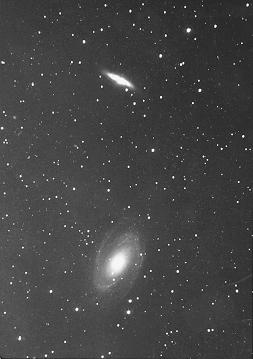
The galaxy M81 is an example of a "Grand Design Spiral", because its arms are clearly defined and wrap all the way around the bulge. Watch the arms appear more and more clearly as we increase the contrast in this image:
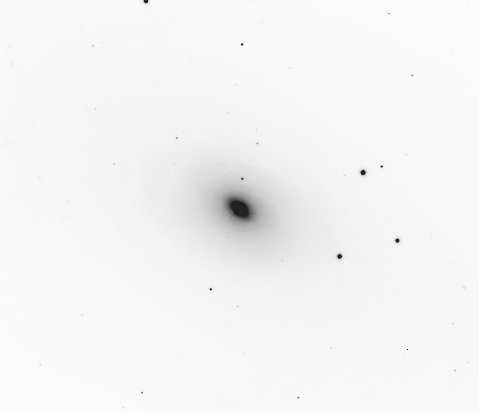
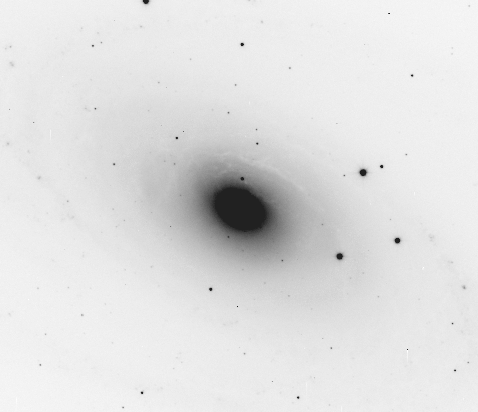
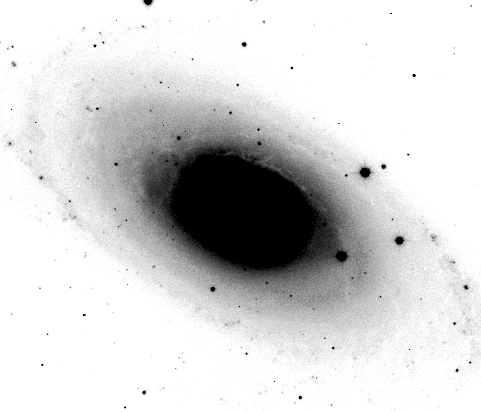
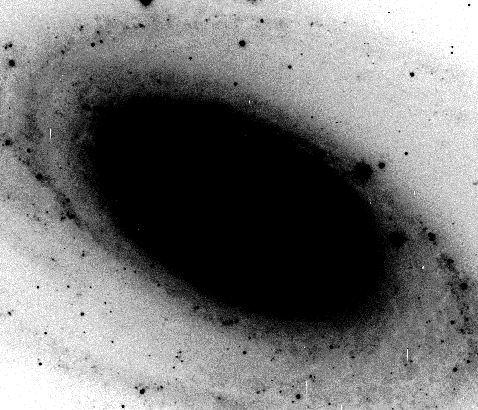
Barred spiral galaxies, like NGC 1365, have a straight segment joining the spiral arms to the bulge
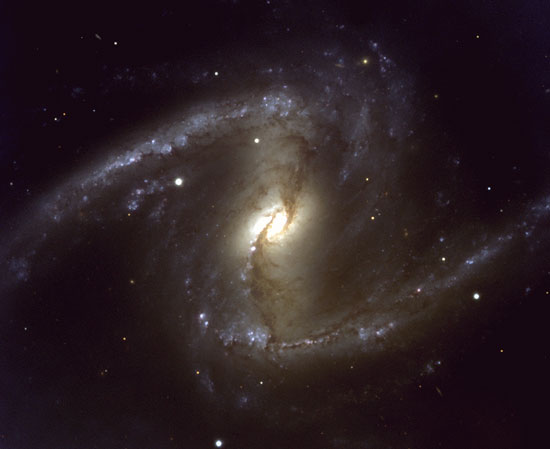
The "Spindle Galaxy", aka M102 or NGC 5866, is an S0, with a dark dust lane blocking some of the light from its disk
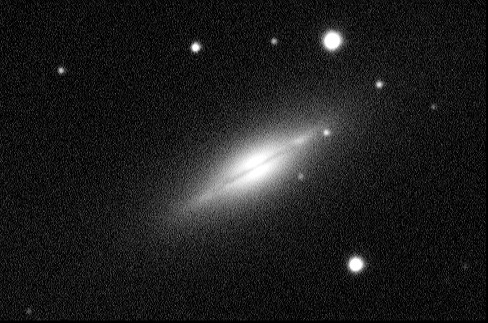
M32 is a companion of the Andromeda Galaxy M31; it is relatively small, one of the dwarf ellipticals
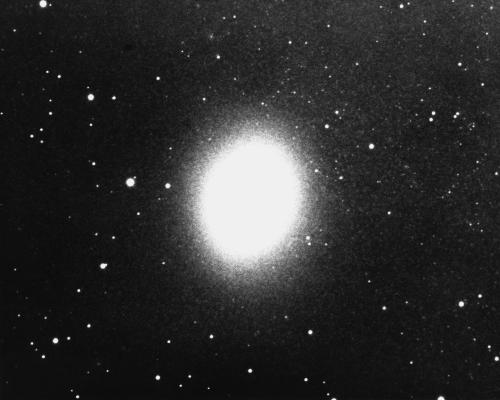
M87, on the other hand, is a giant elliptical, one of the largest galaxies in the Virgo Cluster. But notice how much it resembles the tiny M32!
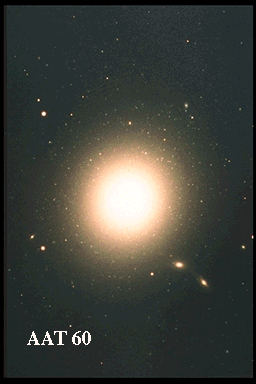
If look closely around M87, you can see its many globular clusters
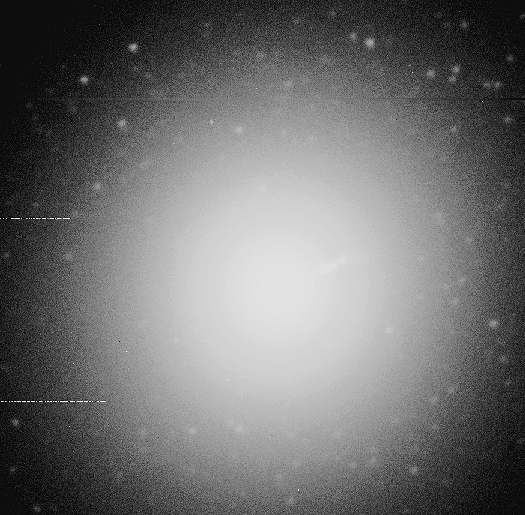
The inner regions of M87 show a very peculiar feature: something like a jet of material coming out of the nucleus. Even pictures taken decades ago from ground-based telescopes showed it:
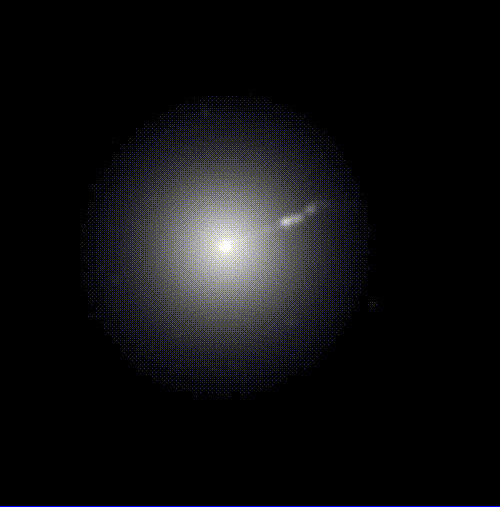
Recent pictures taken by the space-based HST show it very clearly
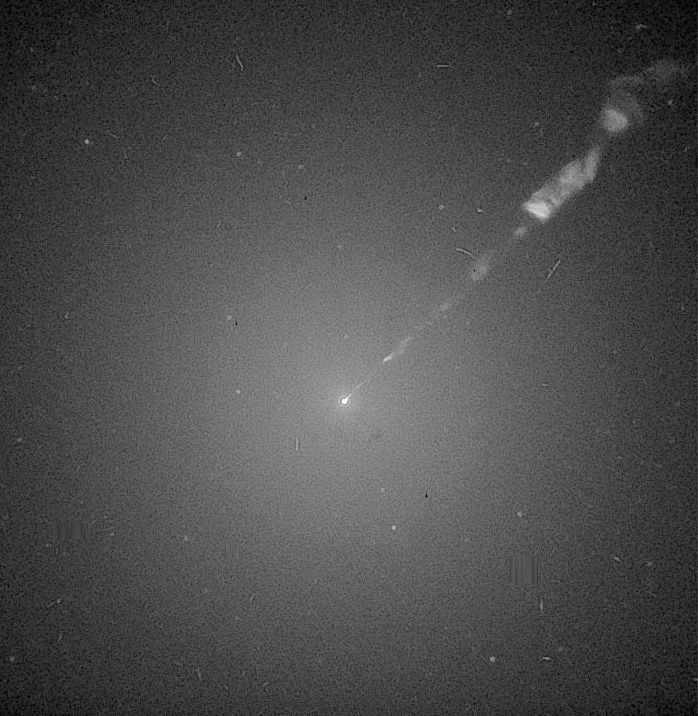
The peculiar galaxy "Centaurus A", or NGC 5128, looks very much like a giant elliptical, but it has a strong dust lane crossing it
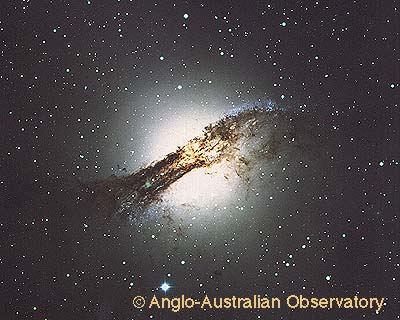
The basic groups may be distinguished in several ways:
Elliptical Spiral Irregular
------------------------------------------------------------------------
looks like sphere spiral train wreck
squashed sphere pinwheel
barred wheel
stars colors reddish blue in arms mostly blue
red in bulge
red in halo
star ages old young in arms mostly young
old in bulge
old in halo
gas/dust? not much in arms lots, all over
The "Hubble Tuning Fork" classification scheme is shown below; it separates
Click on the diagram to see a larger version, in which the text in captions is legible.
For examples of each type of galaxy, look at this montage of galaxies .
As we learn more about the universe, we find more examples of galaxies which don't fit into the Hubble Tuning Fork system very well. A good place to read about such "wierd" galaxies is an article by Greg Bothun in the May 2000 issue of Sky and Telescope, called "Beyond the Hubble Sequence." You can find it in the RIT Library.
If you want to know more about some particular galaxy, a good place to start is NED, the NASA Extragalactic Database. It can give you the position, brightness, and type of any galaxy you can name, as well as references to articles about it.
Good sites for pictures of galaxies:
 Copyright © Michael Richmond.
This work is licensed under a Creative Commons License.
Copyright © Michael Richmond.
This work is licensed under a Creative Commons License.